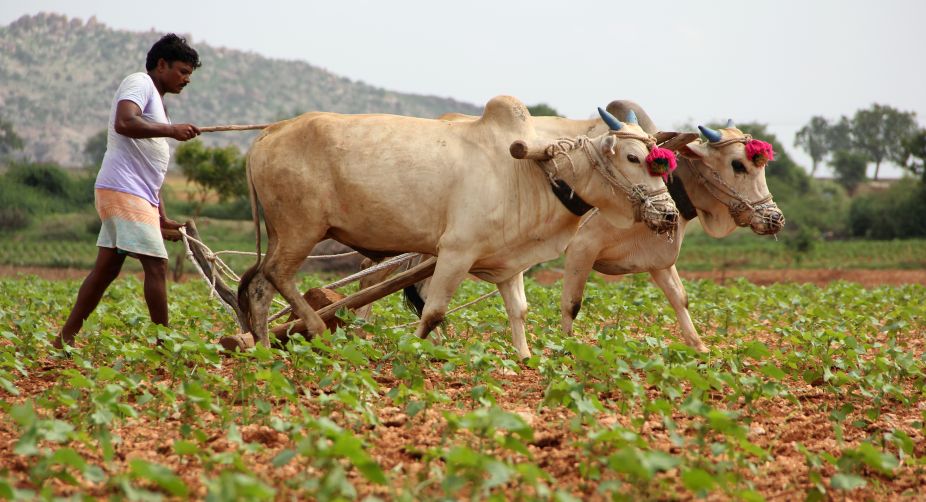The farmer is the only man in our economy who buys everything in retail, sells everything at wholesale, and pays the freight both ways. — John F Kennedy
The development paradigm has traditionally treated agriculture as the prime mover, the engine to sustain people, a promoter of property and power, the launching pad for development as well as the foundation on which the economic edifice can and does rest. The agricultural commodity market remains at the heart of agricultural development and is an important element in achieving the farmer’s well being. The availability of the market is as important as irrigation. It relates to the quantity that has to be grown, the method of cultivation, and the method of profitable sale.
The importance of this crucial aspect has largely been ignored by the agricultural policy makers and mainstream economists. Since independence, the major problem that confronts small and marginal farmers is the lack of proper marketing. In spite of several attempts to reform, agricultural markets largely suffer from poor competitiveness, fragmentation, inefficiency, presence of middlemen, and frequent price manipulations. Indeed, agriculture in India has now become a relatively unrewarding and hopeless profession due to the unfavourable price regime.
Farmers are on a treadmill in which the downward pressure on the price that they receive — and/or the upward pressure on inputs needed for production — force them to adopt new technologies to enhance the scale of production in an attempt to continue in the farming profession. But farming is one of the few enterprises that pays retail prices for inputs and sells its produce at wholesale prices. As the financial returns of farmers decline per unit of output, in order to reap the same returns as before the farmers are generally advised that they must expand operations. The treadmill that it creates is indicated by the adage, “We grow more corn to feed more cows, to make more milk, to buy more land, to grow more corn.” Those who survive under the process of ‘scale enlargement’ usually have large enterprises, a good education, and enormous working capital. They are highly organised and enjoy a premium for the commodities they sell because of their large quantity. They pay less for inputs as also interest on borrowed money, and are in a position to earn a profit through the use of hired labour.
But as regards small and marginal farmers, a mere increase in production with improved farming techniques is not the panacea for the problems that they face. Indian agriculture is dominated by small holders, with 85 per cent of all operated holdings being marginal or small and 63 per cent being just marginal. Adoption of technology enables them to produce more, but their produce is sold for less. The scenario can aptly be described with the words of Joannes Stobaeus, ‘Farming is a most senseless pursuit, mere labouring in a circle. You sow that you may reap, and then you reap that you may sow. Nothing ever comes of it.’ A similar trend has been noticed in livestock farming as well.
The share of farmers in the total retail price has declined and the marketing/trader share has increased. The average farmers are so poor and indebted that they are not in a position to wait for better prices. A recent survey conducted by the National Sample Survey Organisation (NSSO) revealed that nearly 50 per cent of India’s 90 million farmers were indebted to either banks or money lenders. They are compelled to dispose of their products immediately after harvest to clear their dues, so that they can borrow again. The prices remain low at the time of harvest. Thus the semi-feudal tenure-based relationship and the interlocked contracts lead to ‘forced commerce’ or ‘distress sales’ in Indian agriculture. Immediately after the harvest, the supply consists of the completely unrewarding sales of indebted farmers. Worse still, contracts for agricultural commodities are interlocked with credit in order to depress commodity prices below those which would result from unconstrained transactions, and raise interest rates above those of the ‘market’.
The policies on procurement and Minimum Support Price (MSP) for some agricultural commodities, intended to plug ‘distress sale’, have been of little help to farmers. The MSP fixed by the government has not been regulated effectively and it remains on paper due to lack of a proper marketing system, regulations, policies, awareness, punishment etc. As a result, while the traders and rich farmers profit from MSP, poor and marginal farmers are victimised by exploitative prices.
There are many ways by which farmers can dispose of their surplus produce. Commodities are sold to village money-lenders, the rural markets, and cooperative marketing societies. According to one estimate, around 85 per cent of the wheat, 75 per cent of oilseeds and 35 per cent of cotton in Punjab are sold by farmers in the villages. Often the money lenders act as commission agents of the wholesale traders. The chain of middlemen in agricultural marketing is so large that the share of farmers is reduced substantially. For instance, a study has revealed that farmers get only about 53 per cent of the price of rice, 31 per cent being the share of middlemen and the remaining 16 per cent being the marketing cost. In case of vegetables and fruit the share is even less — 39 per cent in the first and 34 per cent in the latter. The share of middlemen in the case of vegetables was 29.5 per cent and in case of fruit 46.5 per cent. Some of the intermediaries in the agricultural marketing system are village traders, brokers, wholesalers and retailers, money-lenders, and so on. The number of unregulated markets in the country is substantially large. Brokers, taking advantage of the ignorance and illiteracy of farmers, use unfair means to cheat the peasantry both in terms of weight and quality.
The Government of India introduced major reforms by implementing the Agricultural Produce Marketing (Regulation) Act (APMRA) during the 1960s and Seventies. This has been a major driving force behind the achievements of the Green Revolution. But the gains brought about by APMRA have been diluted over time. Markets are not adequately regulated. Under the APMRA, the prices are determined and driven by Agricultural Produce Market Committee (APMC). The monopoly rights enjoyed by APMCs on the first sale of commodities have been disappointing. However, political will is required to dismantle this centralised monopoly and make it compete with other players such as big retailers. Integrating fragmented agricultural markets can ensure a better deal for farmers and also help consumers who suffer frequent price increases on account of local shortages.
Small holders have to contend with the risk of high market-price fluctuation risk. Many are unaware of the daily prices and often depend on middlemen, who exploit them. There is a marginal presence of modern channels like retail (supermarket) buyers, food processors, and wholesale cash ‘n’ carry players. The supermarkets procure only ‘A’ grade produce, offer APMC market-based prices and do not buy regularly with pre-committed orders. The contracting agencies still do not attend fully to the market risk, let alone the production risks of the growers. Indian agriculture is largely an unorganised sector and the root cause of the crisis is the income-deficit. This calls for marketing extension, not just production extension. This would mean better product planning at the farmer’s level, provision of market information, securing/accessing markets for farmers, provision of alternative markets and market orientation in terms of improved practices. To safeguard farmers from exploitation by middlemen the plan called ulavar santhal (farmers’ market), where the farmers can directly sell their products at reasonable prices to consumers, can be introduced.
The writer is a retired IAS officer.











